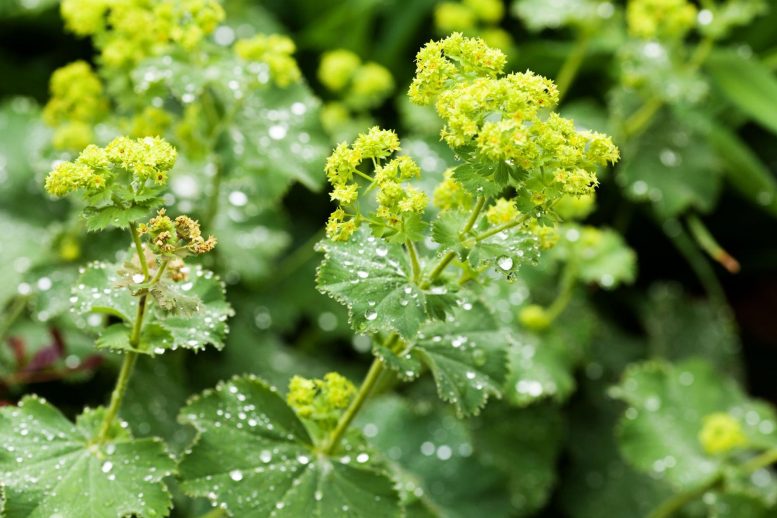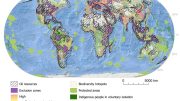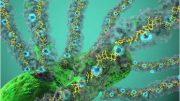
Rain-borne microbes can join the plant’s phyllosphere, protecting them from disease and stressors. Understanding their origin can improve plant health.
When it rains, plants are not only showered with water, but also microbes. These rain-borne microbes have the opportunity to become part of a plant’s aboveground microbial community – known as the phyllosphere. Phyllosphere microbes can protect plants from disease and other stressors and understanding where they come from may help us improve plant health. While plant microbiome research has historically focused on soil and seeds as sources of plant-associated microbes, new findings by scientists at Virginia Tech University suggest that rain may also be an important reservoir.
A study recently published in Phytobiomes Journal led by Marco Mechan-Llontop and Boris Vinatzer examined rain as a reservoir of phyllosphere bacteria. After finding greater densities of microbes on the leaves of rain-exposed tomato plants compared to those grown in the lab, they set out to experimentally test whether rain-borne microbes could successfully colonize the phyllosphere of tomato plants. “Although this is a simple question, it is actually really hard to answer since plants outside are exposed to many bacteria that come from the soil, rain, and the air,” noted Vinatzer.
Additionally, while rain may contain important microbes, their quantities may be small–a milliliter of rain might only contain a few microbial cells. To control for other external sources of microbes and inoculate plants with measurable doses of rain-borne microbes, Vinatzer and colleagues performed a laboratory experiment with rain they collected. They filtered the rainwater to obtain sterilized water and membranes containing the bacterial microbiota. These membranes were incubated to obtain a highly concentrated inoculum of rain-borne bacteria. They sprayed plants with this inoculum or with sterilized rainwater and distilled water (as negative controls) and incubated the plants for one week before characterizing their bacterial communities via DNA analyses.
Their analysis showed that inoculating plants with the rainwater microbial communities increased the abundance of over 100 bacterial taxa, indicating that microbes in rain can successfully colonize and grow on the surface of plants. This suggests rain is a potentially important reservoir for phyllosphere bacteria. The authors hope this research will pave the way for more research into the origins of plant-associated microorganisms and microbes that are efficiently distributed by rain. “The more we know about these bacteria, the better we can use them to our advantage to improve plant health,” says Vinatzer. For example, bacteria that suppress plant pathogens could be sprayed onto leaves to reduce or prevent disease. The authors plan to continue their research examining the importance of rain in phyllosphere assembly and hope to identify beneficial bacteria from rain.
Reference: “Experimental evidence pointing to rain as a reservoir of tomato phyllosphere microbiota” by Marco Enrique Mechan Llontop, Long Tian, Parul Sharma, Logan Heflin, Vivian Angelica Bernal Galeano, David Haak, Christopher R. Clarke and Boris Vinatzer, 1 June 2021, Phytobiomes Journal.
DOI: 10.1094/PBIOMES-04-21-0025-R
Lead author Marco E. Mechan-Llontop is currently a postdoctoral researcher in the Shade Lab at Michigan State University. Senior author Boris Vinatzer is a professor in the School of Plant and Environmental Sciences at Virginia Tech.
Eric Wang is a student at Millburn High School and is interested in how plant-microbial interactions vary among different kinds of plants. Mia Howard is an assistant feature editor for Phytobiomes Journal and a postdoctoral researcher in the Lau Lab at Indiana University. She is fascinated by how plants—often with help from microbes—protect themselves from herbivores with toxic chemicals.









Be the first to comment on "Raining Microbes? New Research Finds Rain-Borne Bacteria Colonize Plants"